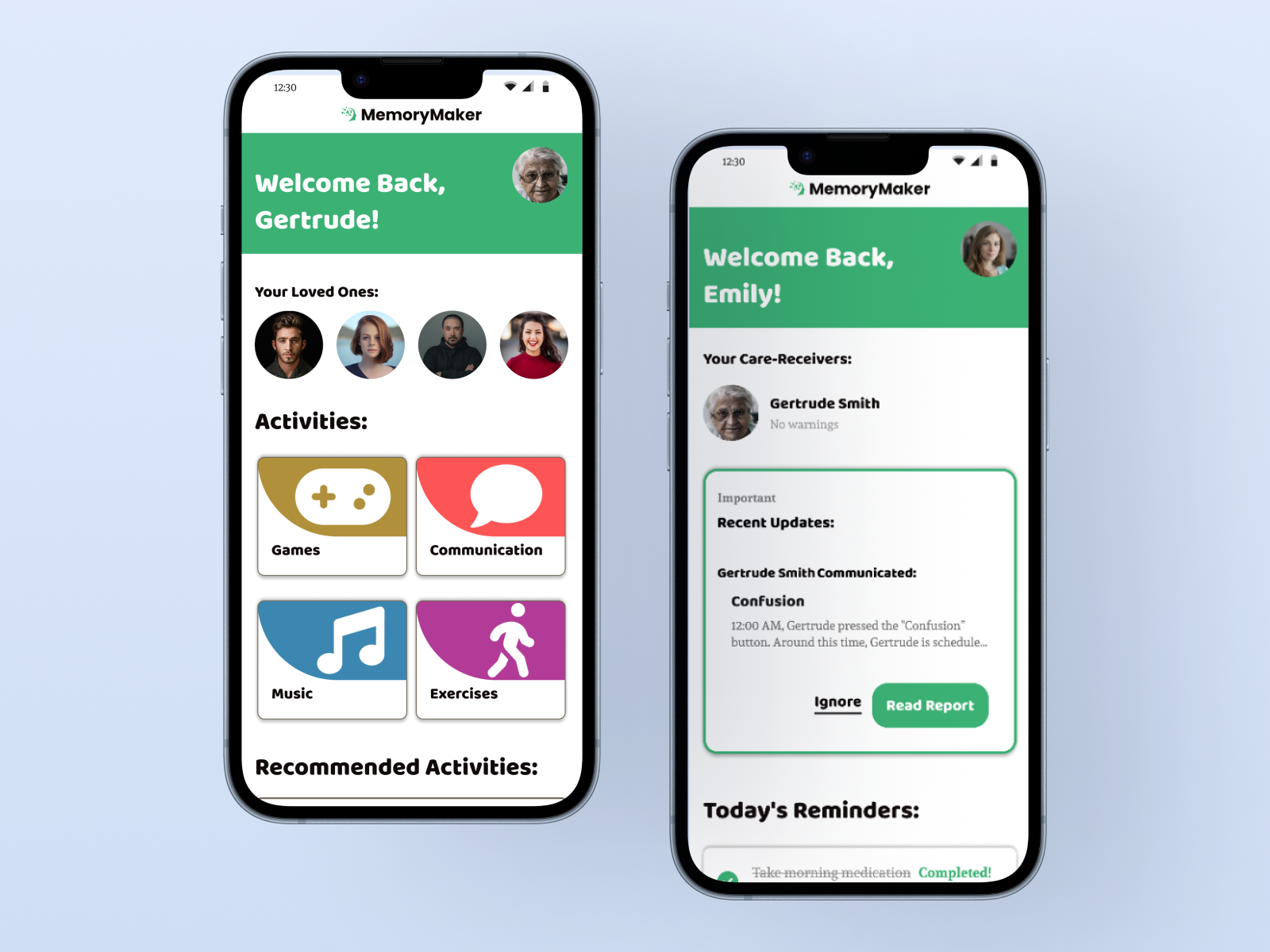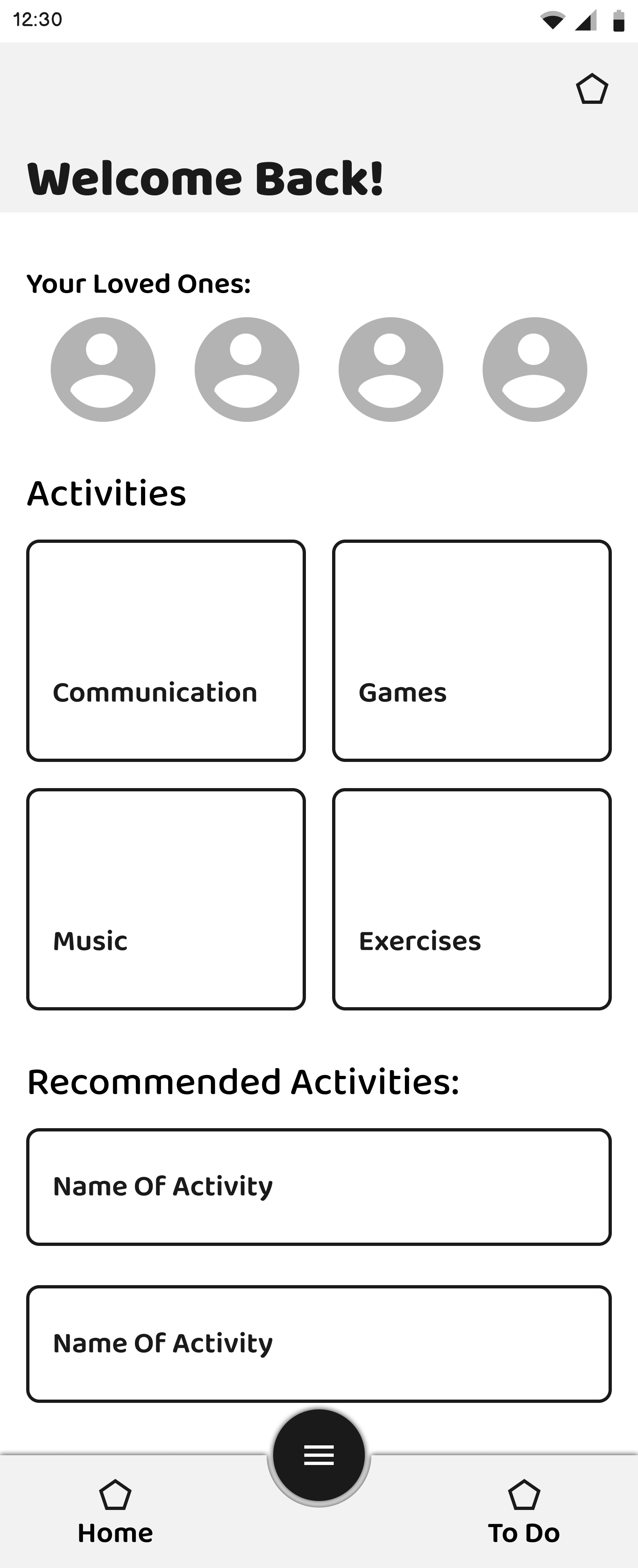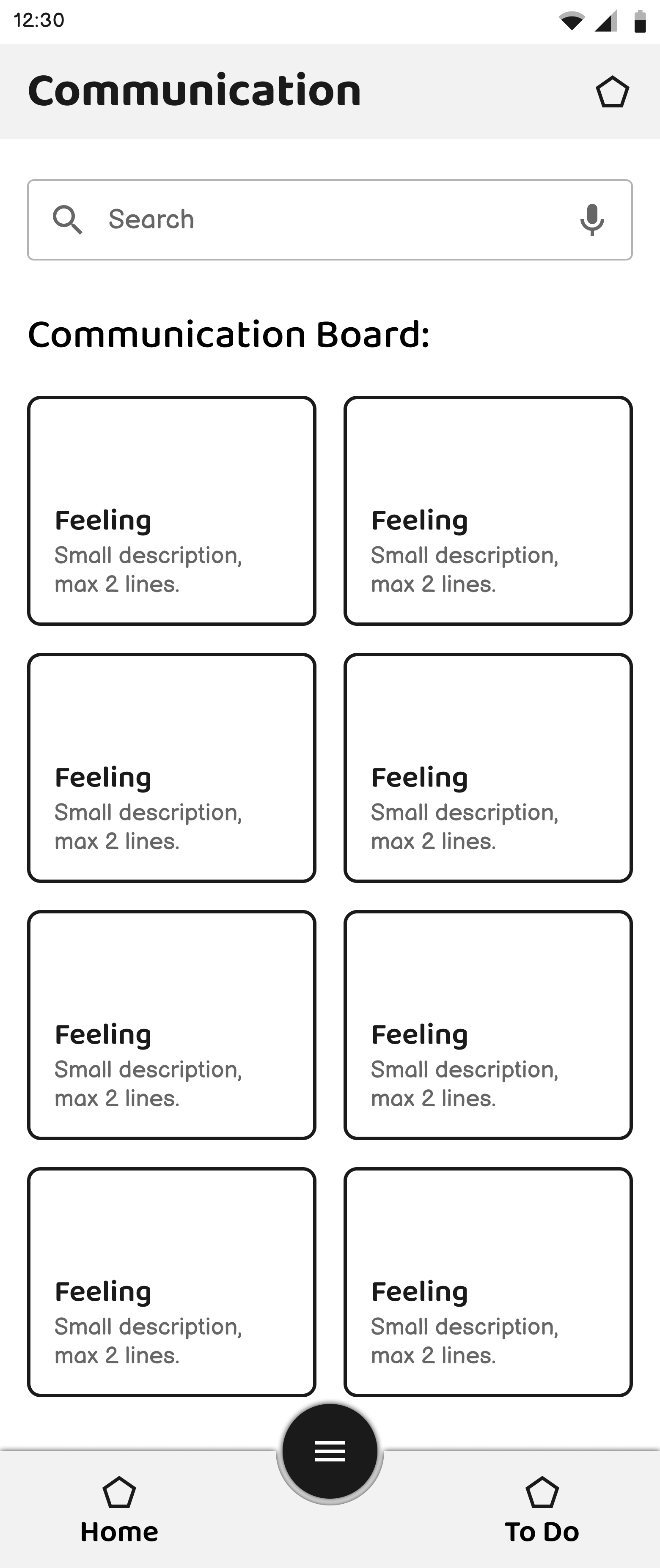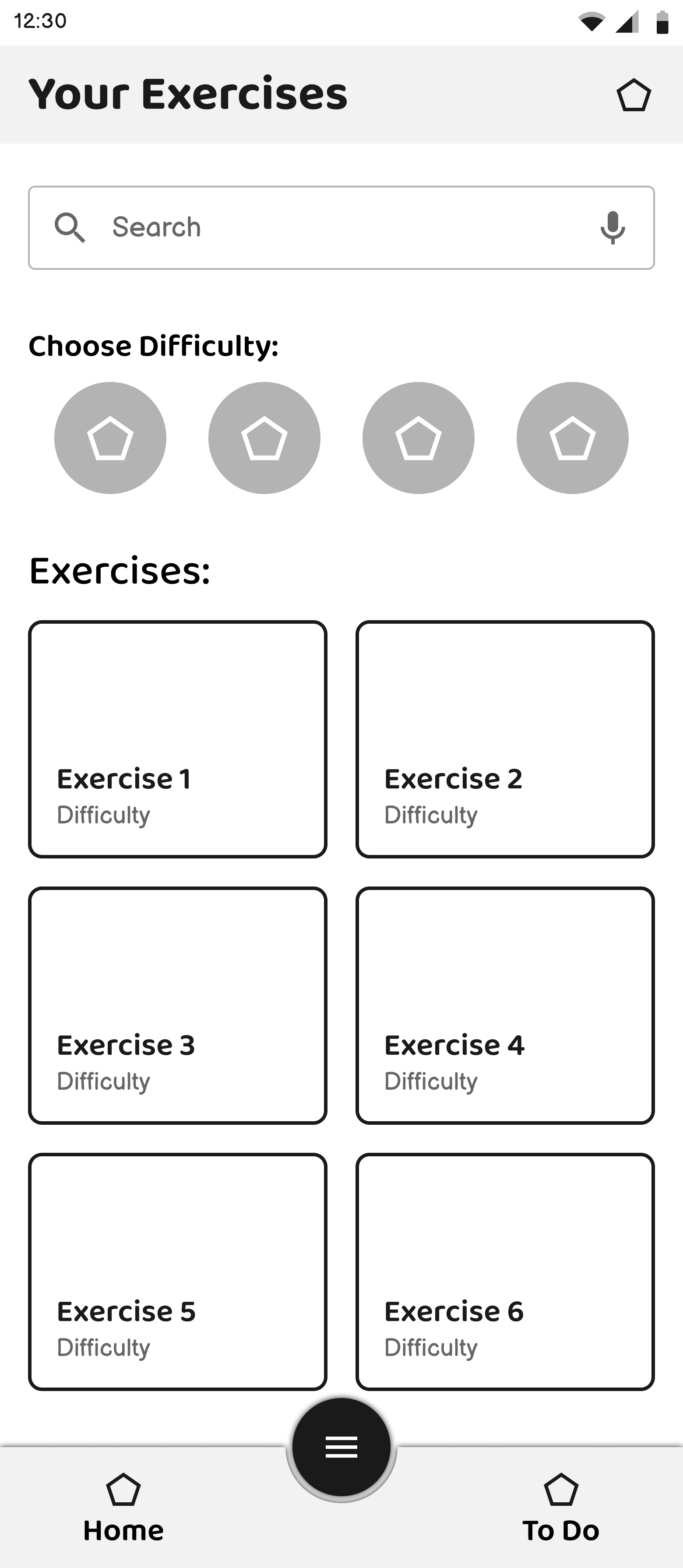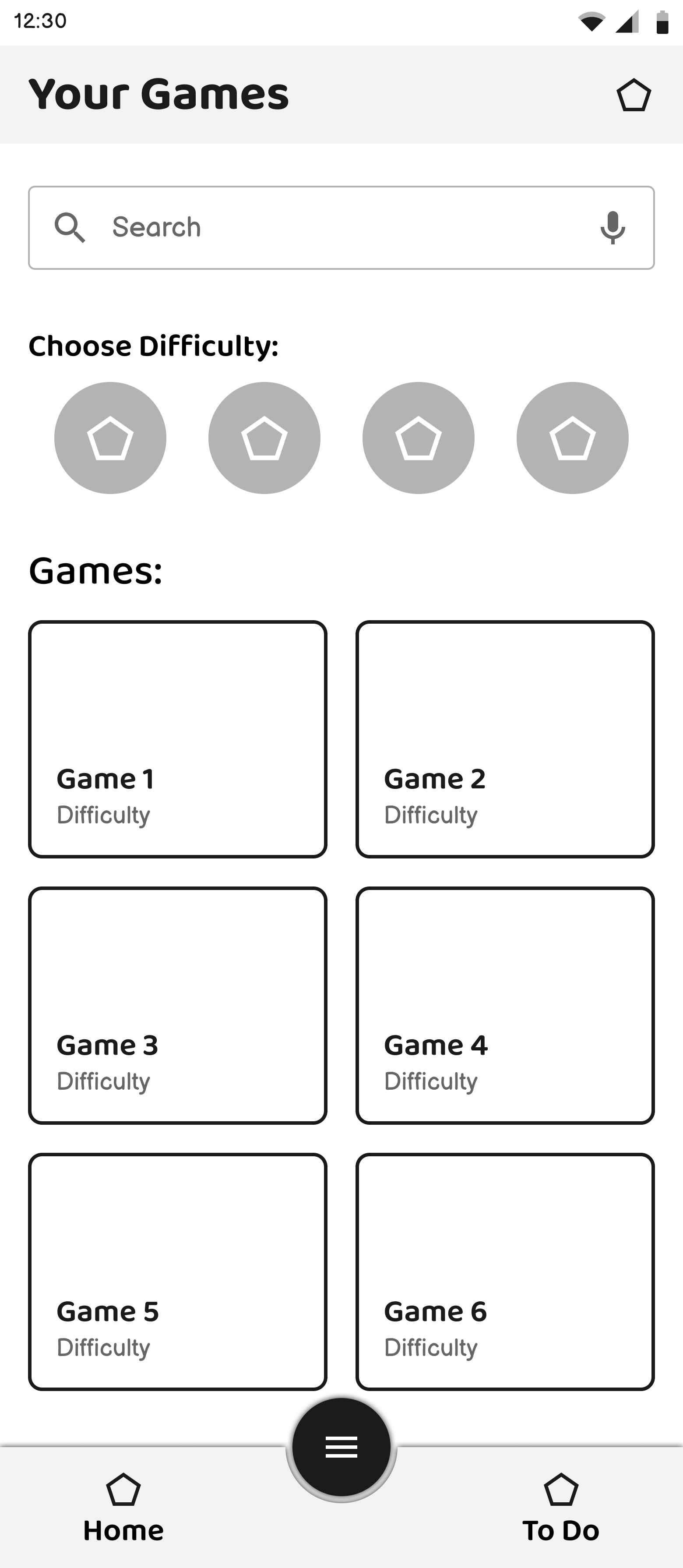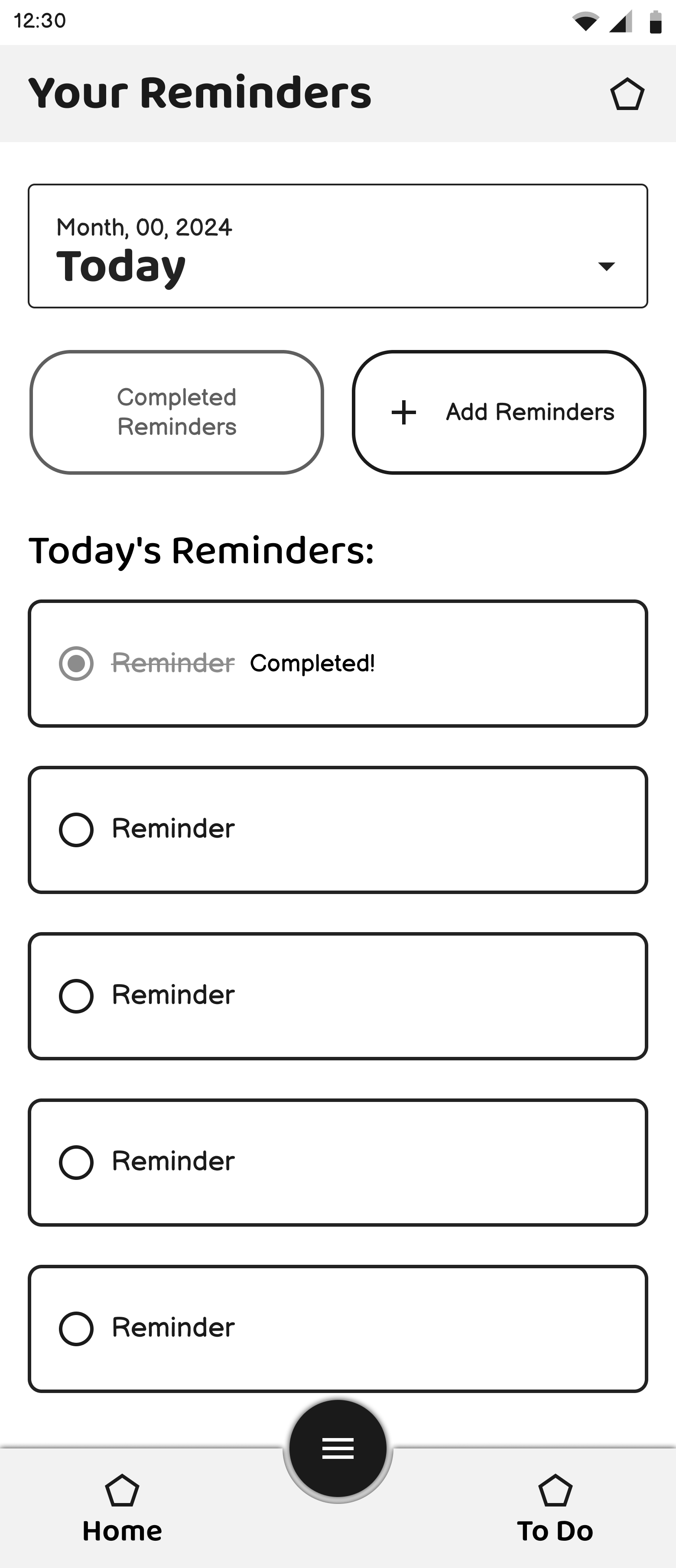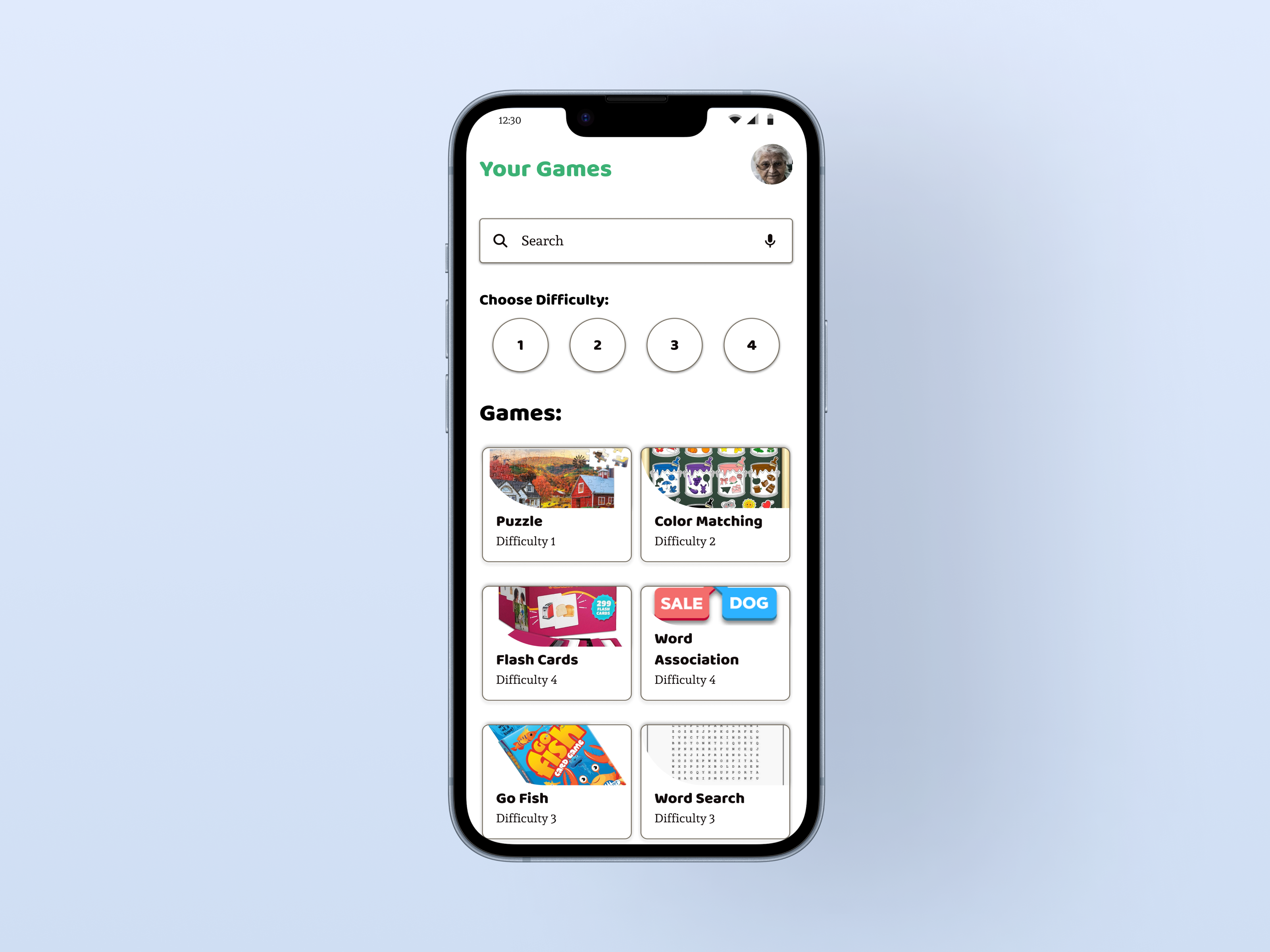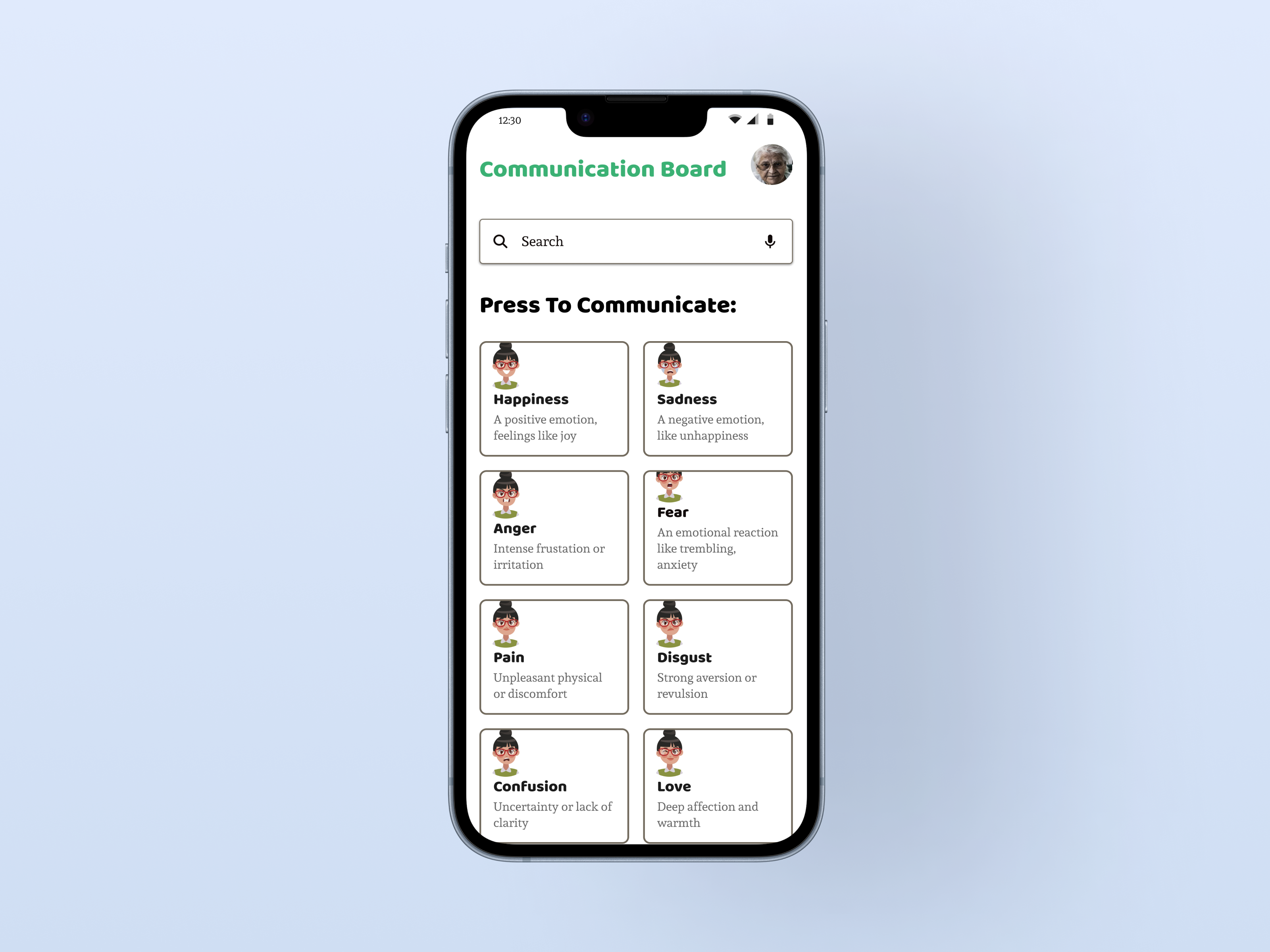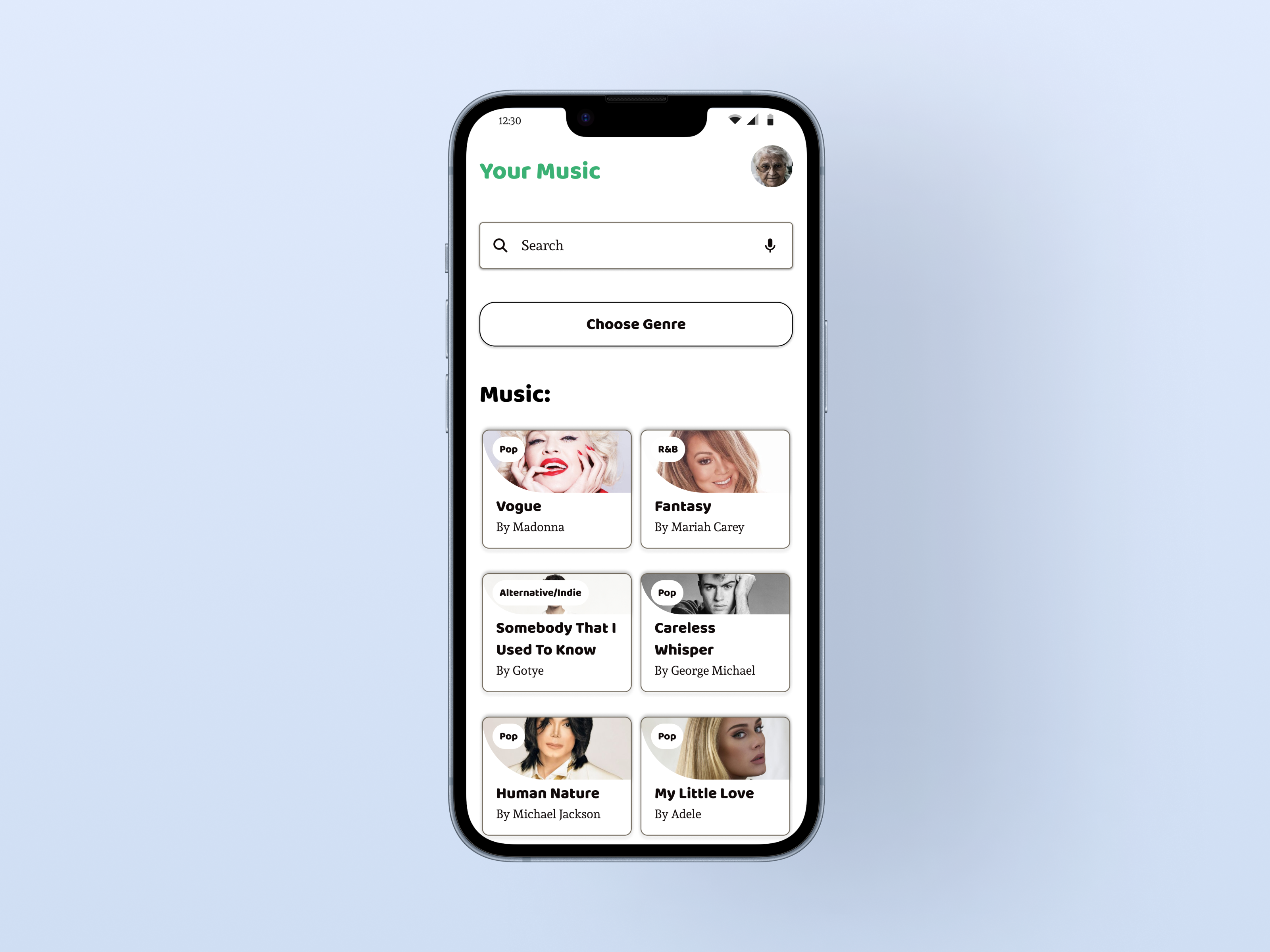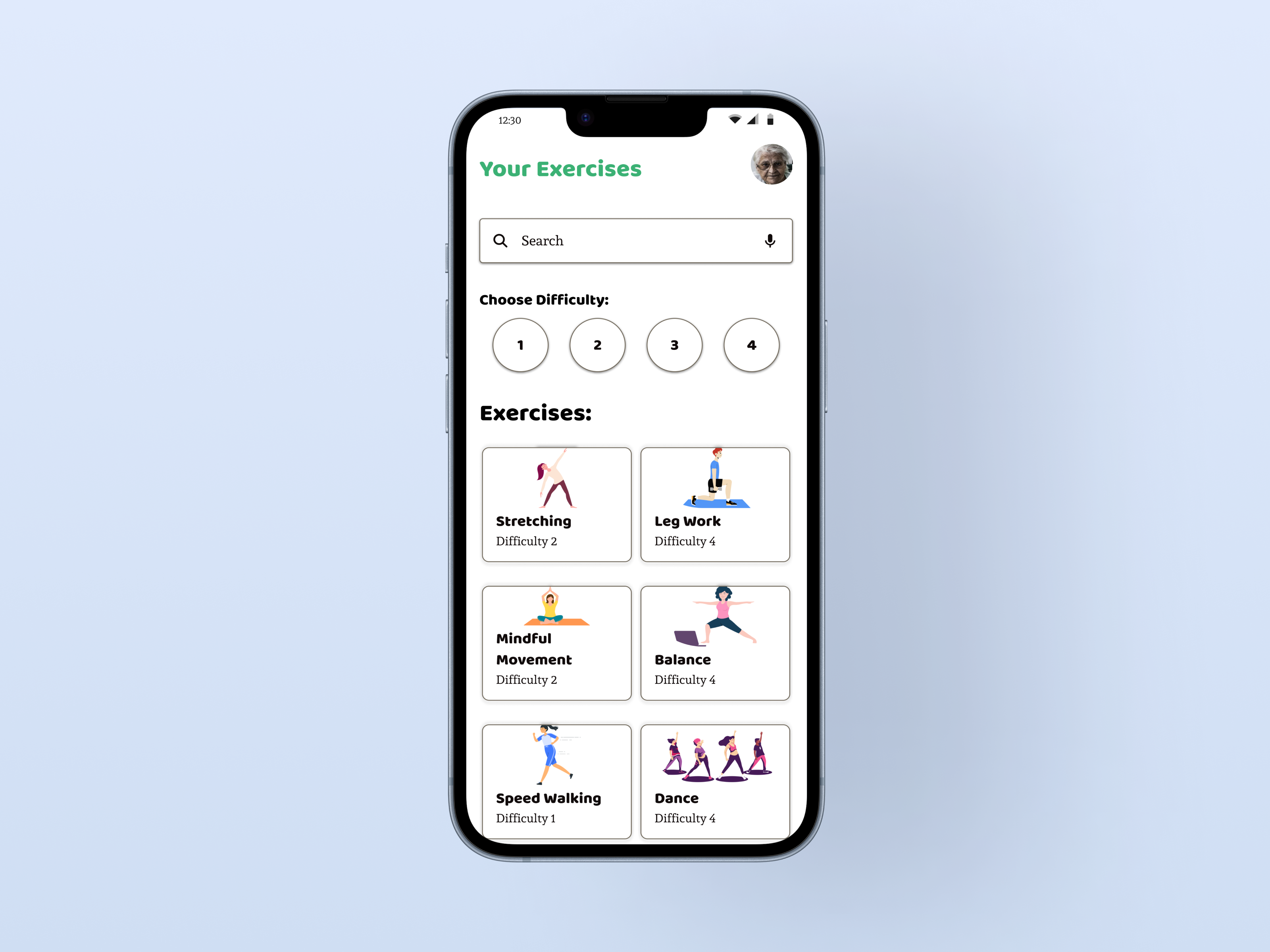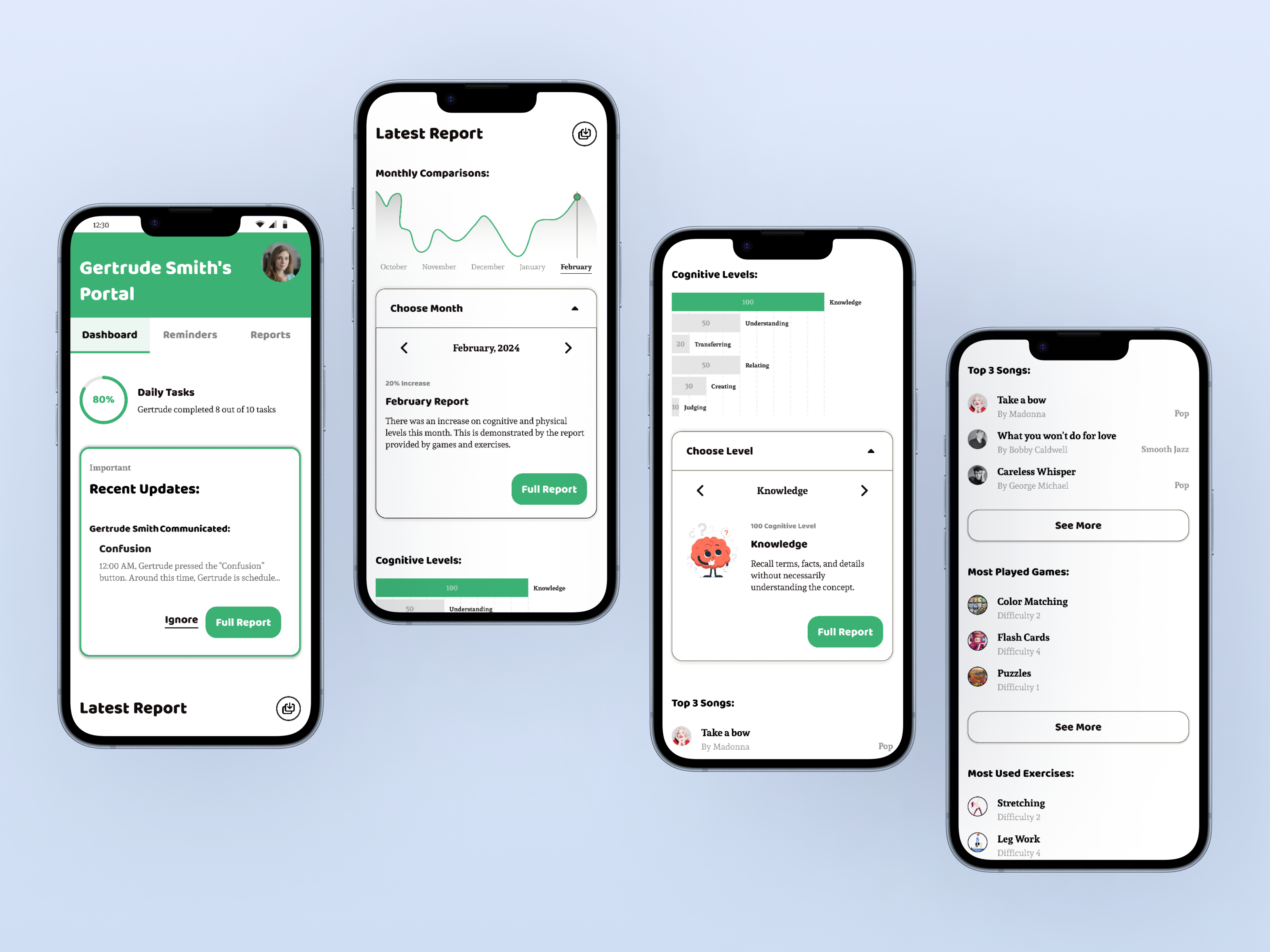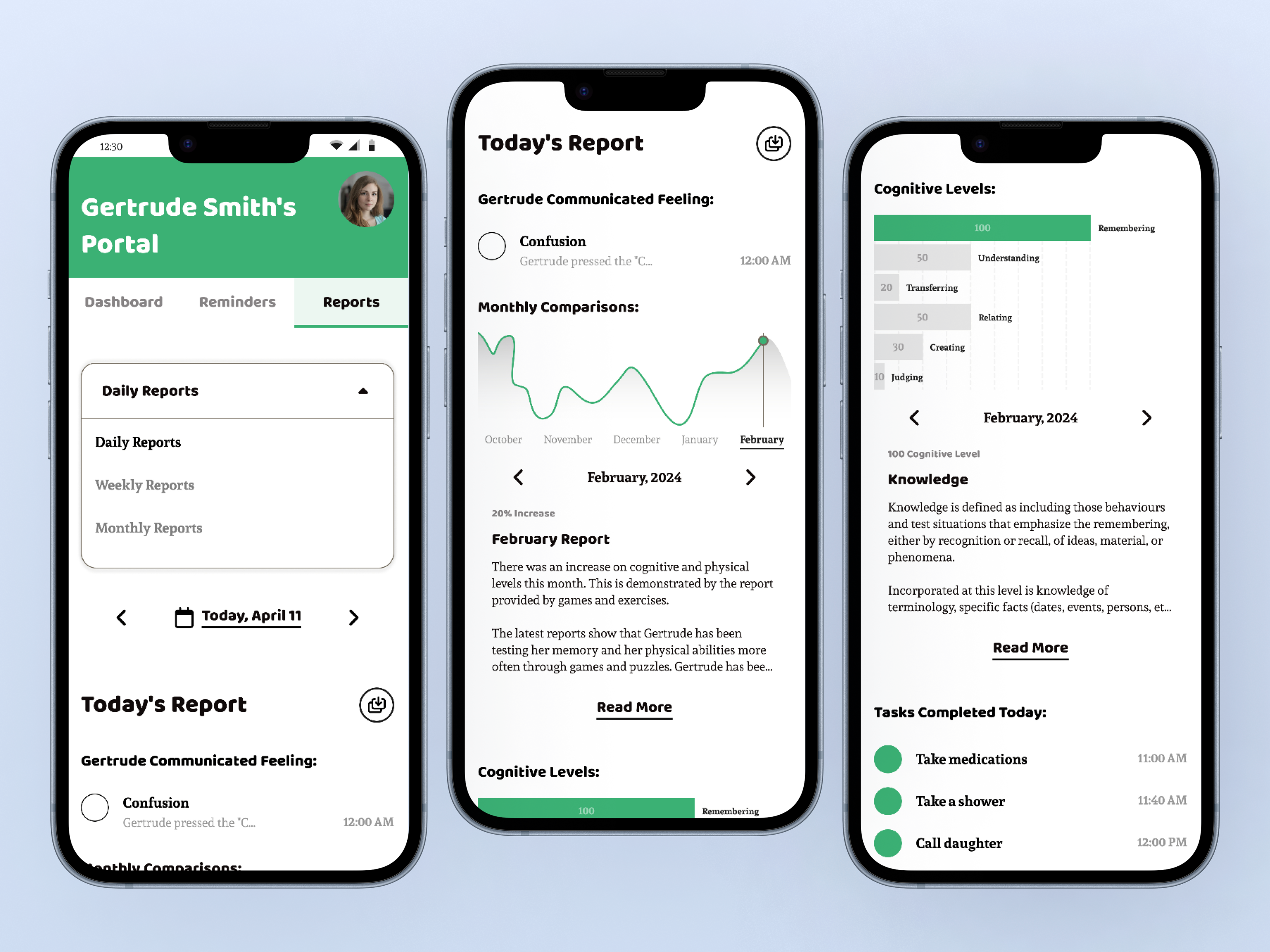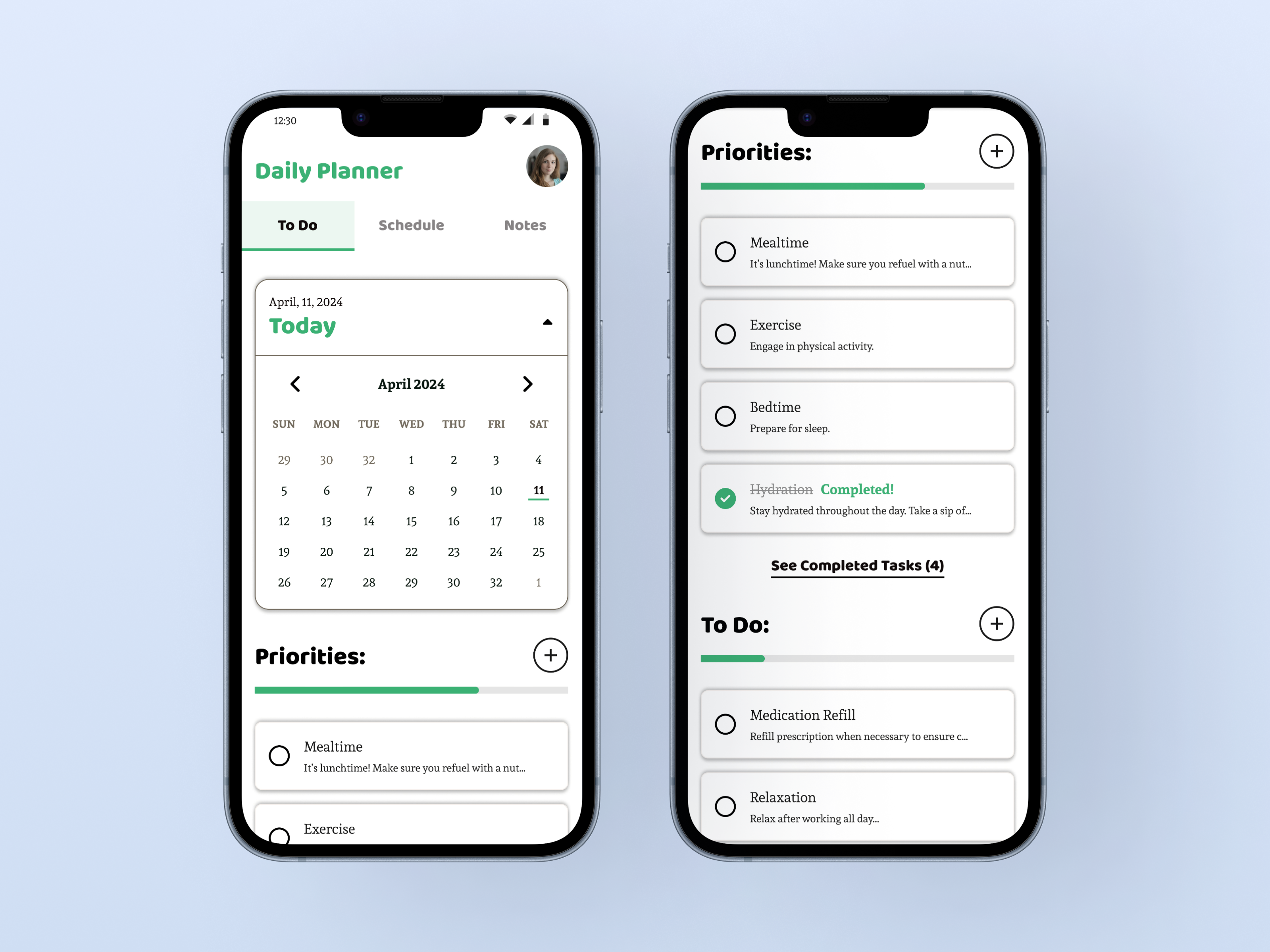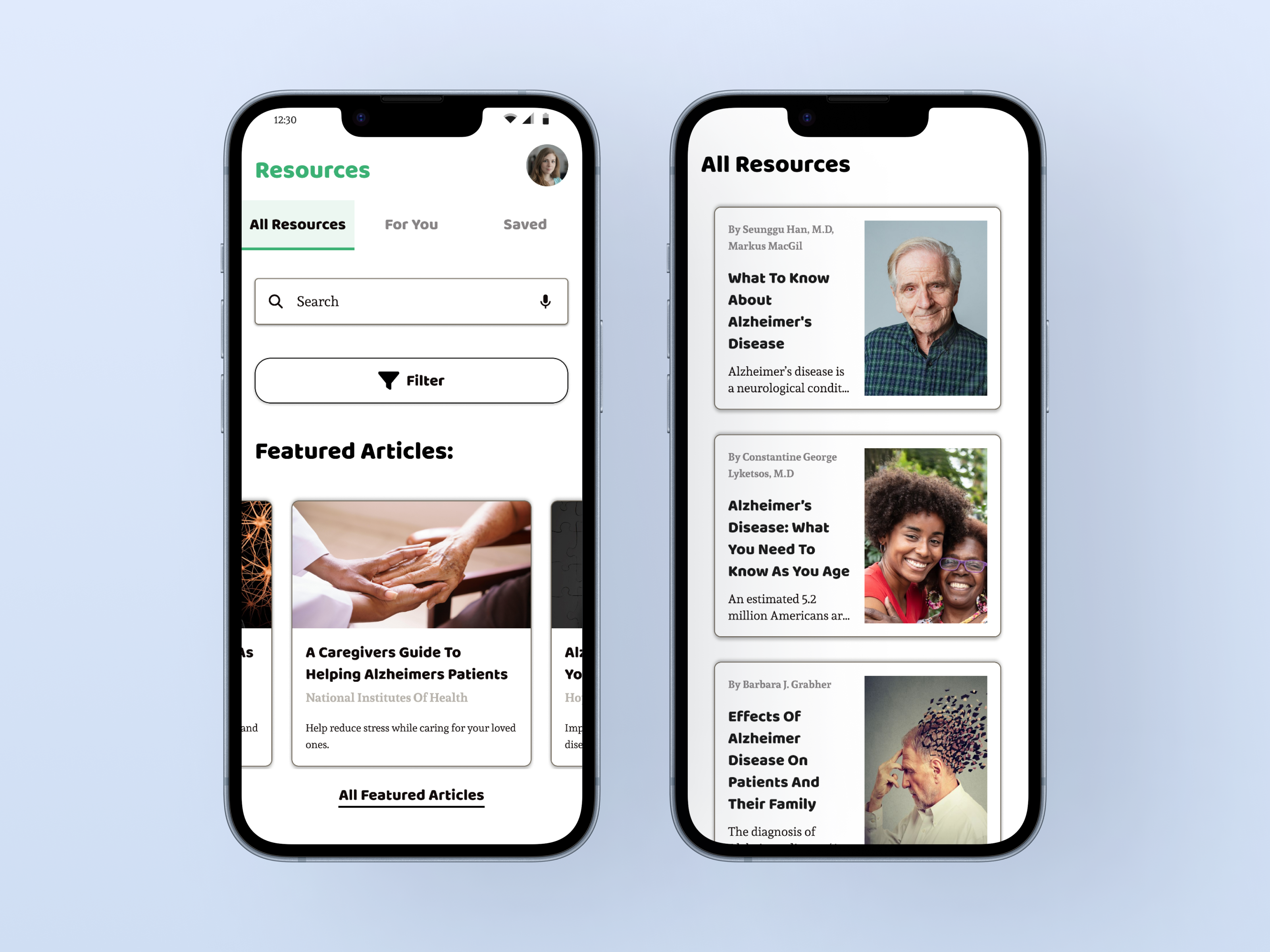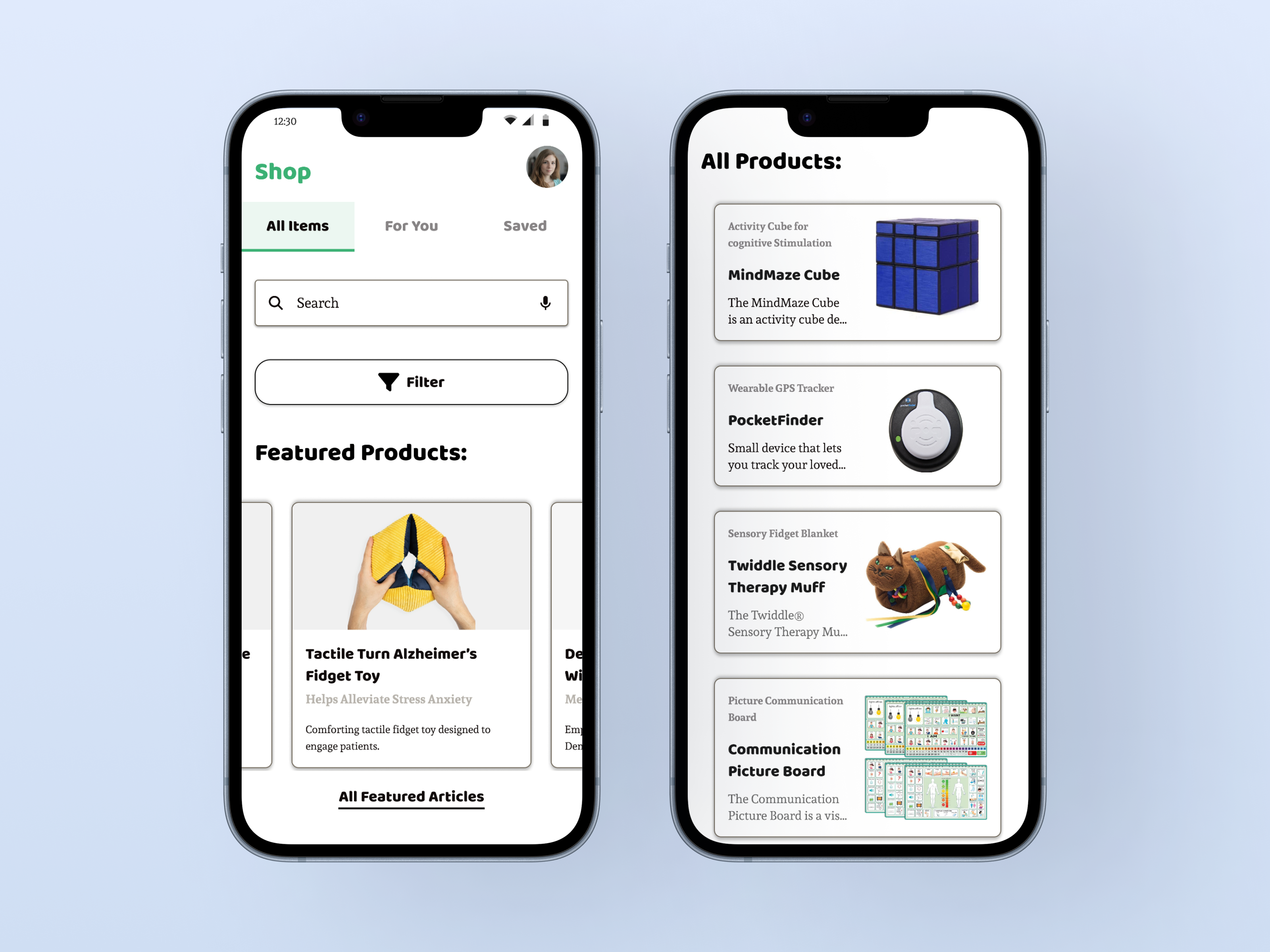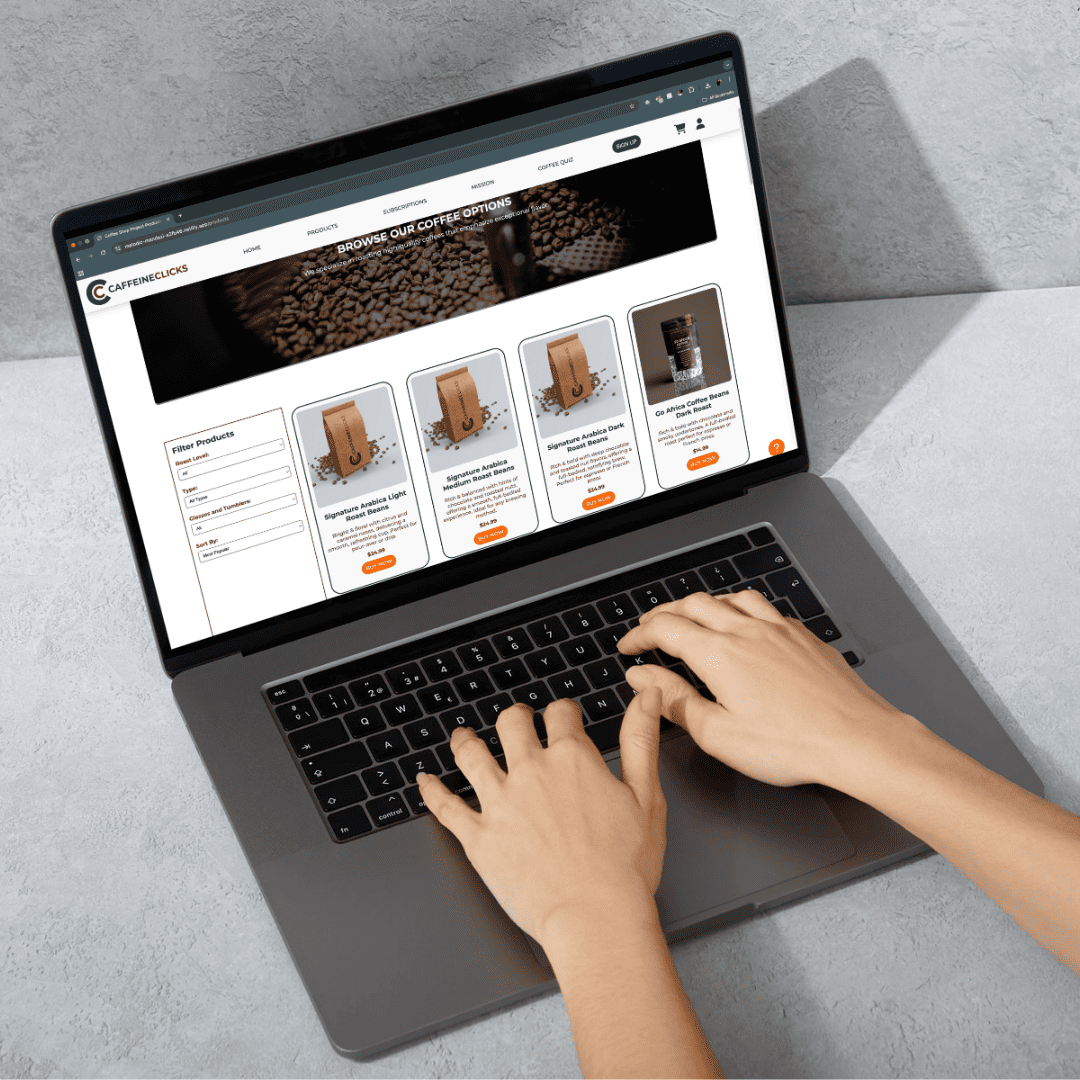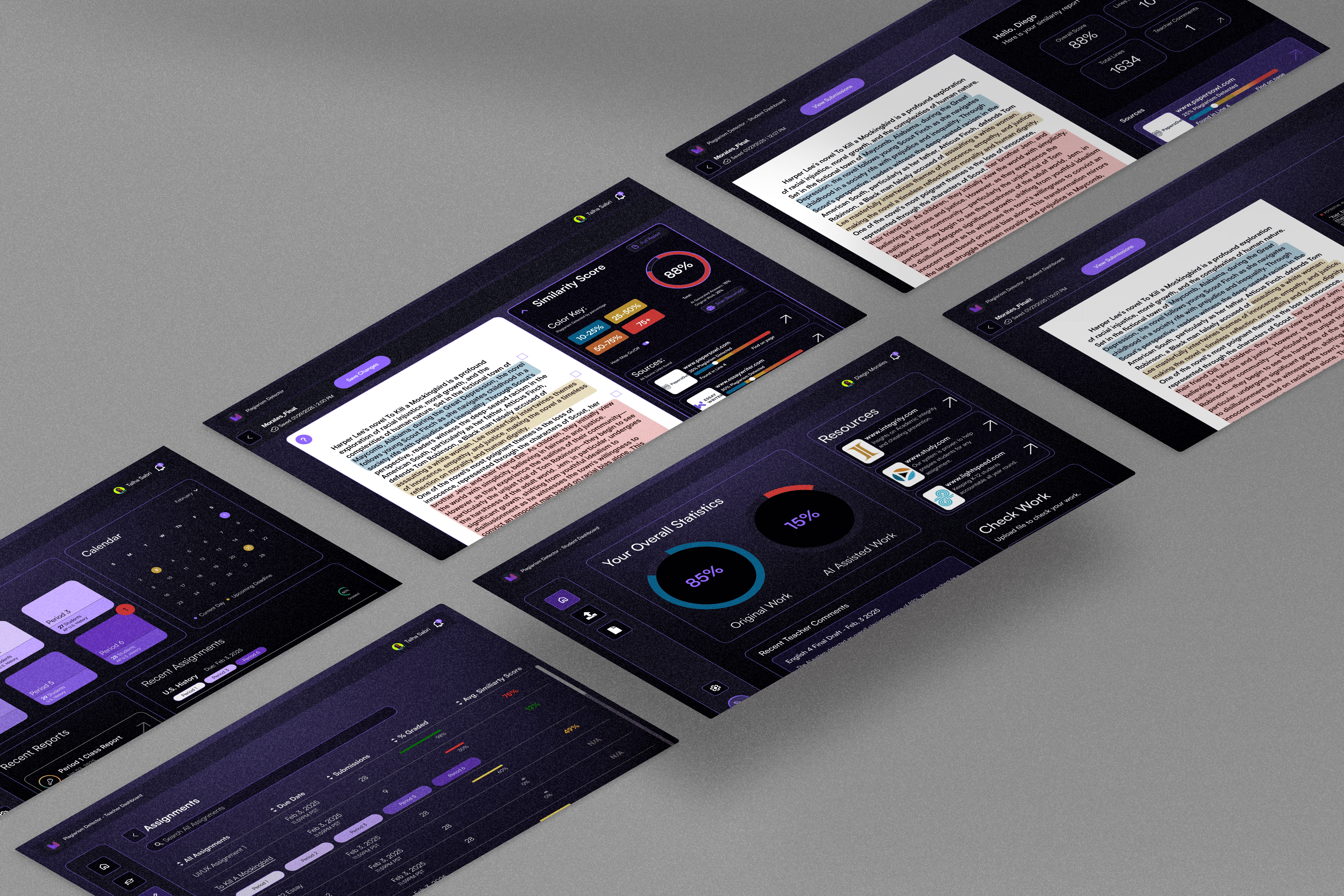Project Overview

- Problem: Alzheimer's patients' struggle with memory loss which increases caretaker stress.
- Contribution: Conducted user research on Alzheimer patients' cognitive struggles & factors that increase caregiver stress. Designed four brand collages, assisted in wireframing and designing the UI prototype. Made design iterations based on testing & feedback.
- Contraints: Identifying user flows for caretaker & patient interfaces; understanding cognitive limitations & how it affects product usability.
- Outcome: Designed a dual-interface app to address patient & caregiver needs effectively.
Project Goals
- Enhance memory retention for Alzheimer’s patients through interactive features.
- Design a user-friendly interface accessible to both patients & caregivers.
- Integrate task management tools to support daily activities & care coordination.
- Facilitate communication between patients, caregivers, & family members.
Challenges
- Problem: 70-90% of patients struggle with memory loss & tasks, reducing independence by 80%.
- Impact: Behavioral disruptions & safety risks increase by 50%, while caregivers face 40-70% burnout rates.
- User Feedback: Need for a simple, dual-interface app to address patient & caregiver needs effectively.
Solutions
- Key Features: Dual accounts for patients & caregivers, to-do lists, real-time alerts, & resource hubs.
- Design Decisions: Simplified navigation, accessible UI with large buttons, green-themed branding for hope & clarity.
Process
- Research: Conducted studies on Alzheimer’s patient needs & caregiver stress, analyzing user data & statistics.
- Wireframing: Created layouts for patient & caregiver interfaces, focusing on key screens like home & reports.
- Prototyping: Developed interactive Figma prototypes tested with patients & caregivers.
- UI Design: Finalized high-fidelity designs with a green palette to evoke life & hope.
Key Results
- Task Completion: Improvement in patient task completion rates.
- Engagement: Increase in patient app interaction.
- Connection: Enhancement in caregiver-patient communication.
- Safety: Reduction in safety risks via monitoring features.
Impact
- User Testing: Positive feedback on ease of use & real-time updates.
- Design Alignment: Matches MemoryMaker’s goal of supporting Alzheimer’s care with empathy.
- Anticipated Impact: Reduced caregiver stress & improved patient quality of life.
Design Question
What combination of products and services in an app will help to increase Alzheimer's patients' memory strength, preserve memories and help caretakers?
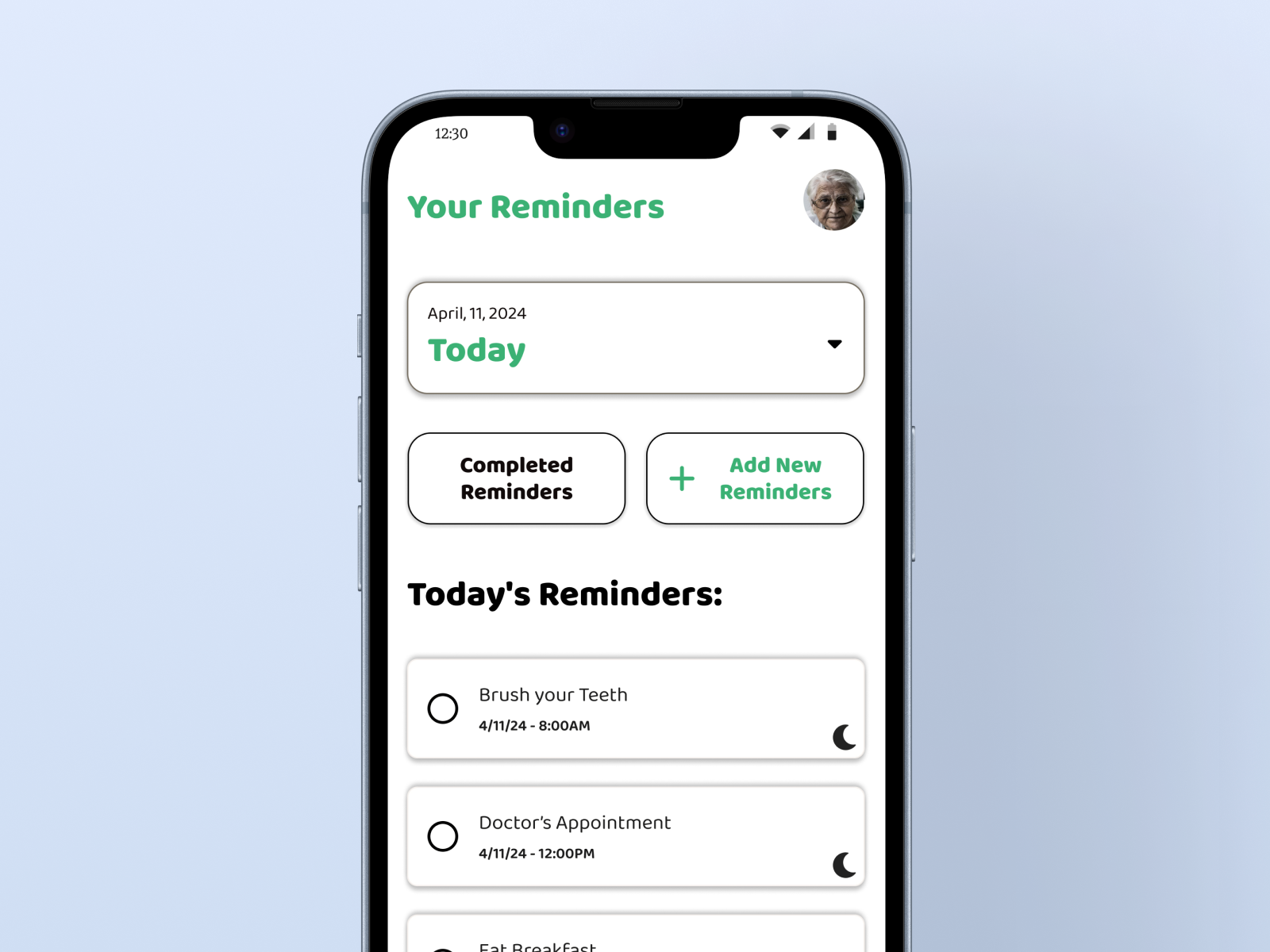
Research
While conducting research for this project, my team and I broke it down into four sections. The clients, Users, Research Ideas, and Solutions. Below are some key statistics that we found.
Users
The users of this project are patients with Alzheimer's and their Caretakers. Patients are individuals suffering from Alzheimer's disease. Due to the nature of the disease, patients may face challenges in memory retention, communication, and daily activities. The goal was to increase a patient's memory strength while giving caretakers access to tracked cognitive tests and exercise scores.
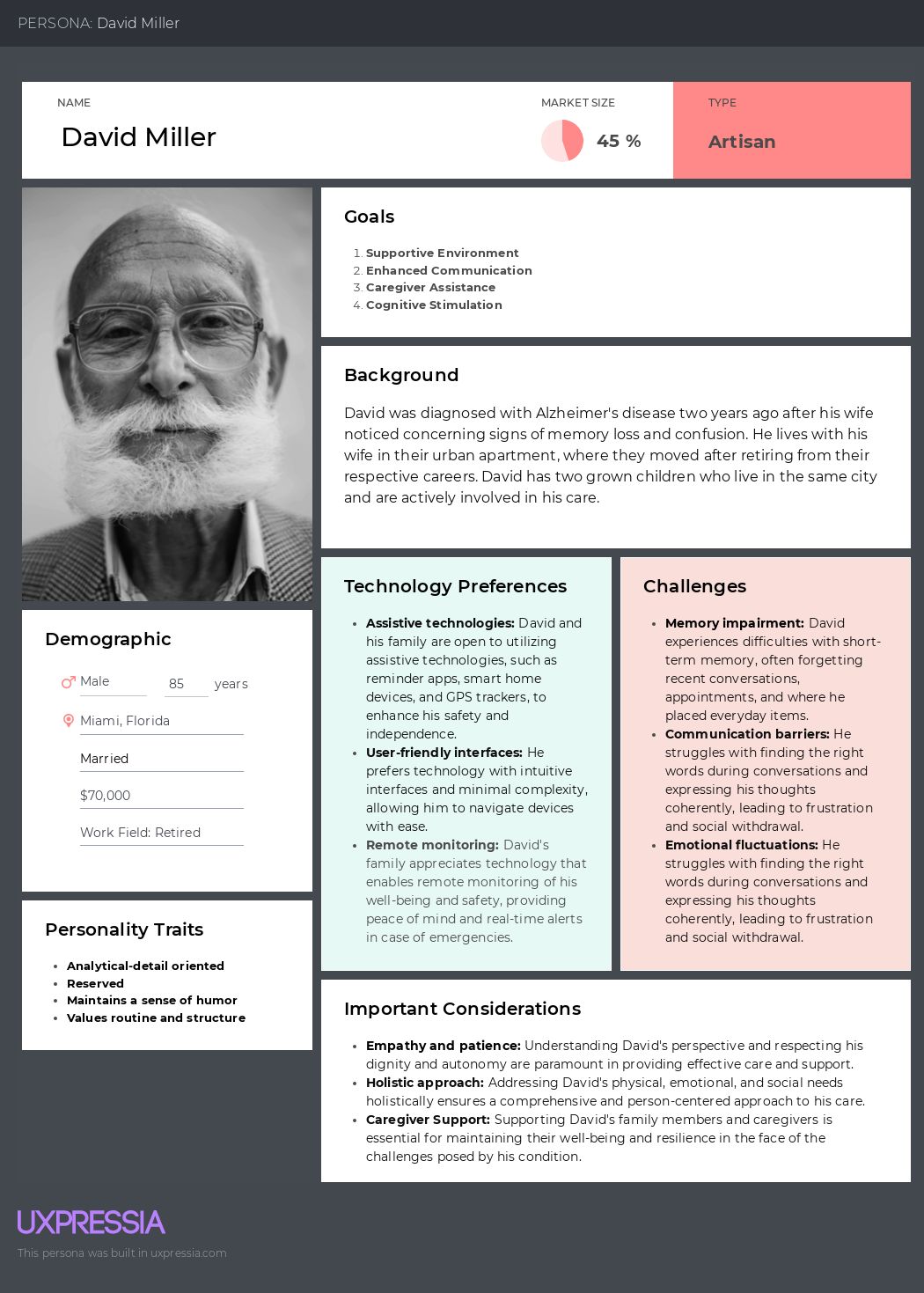
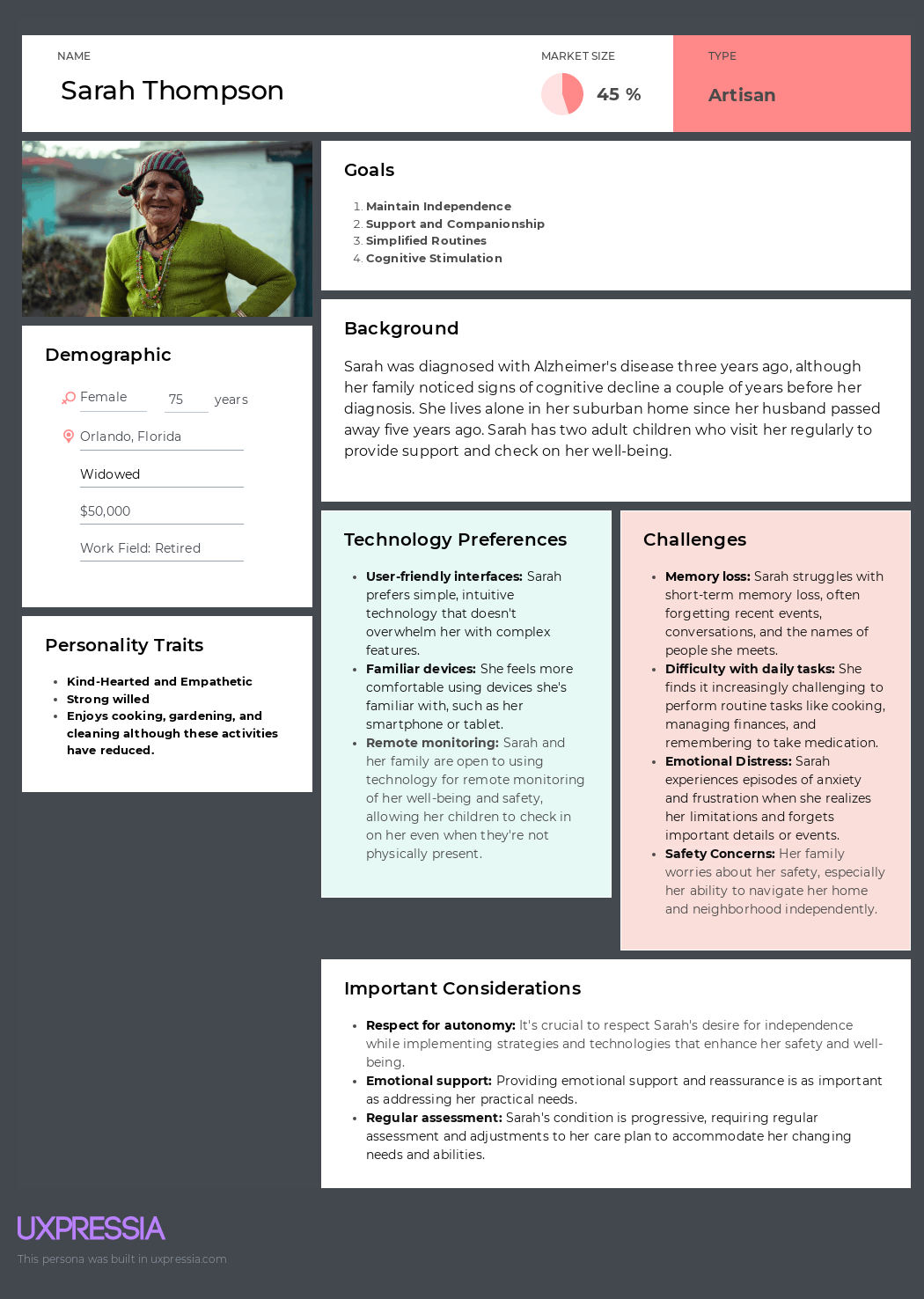
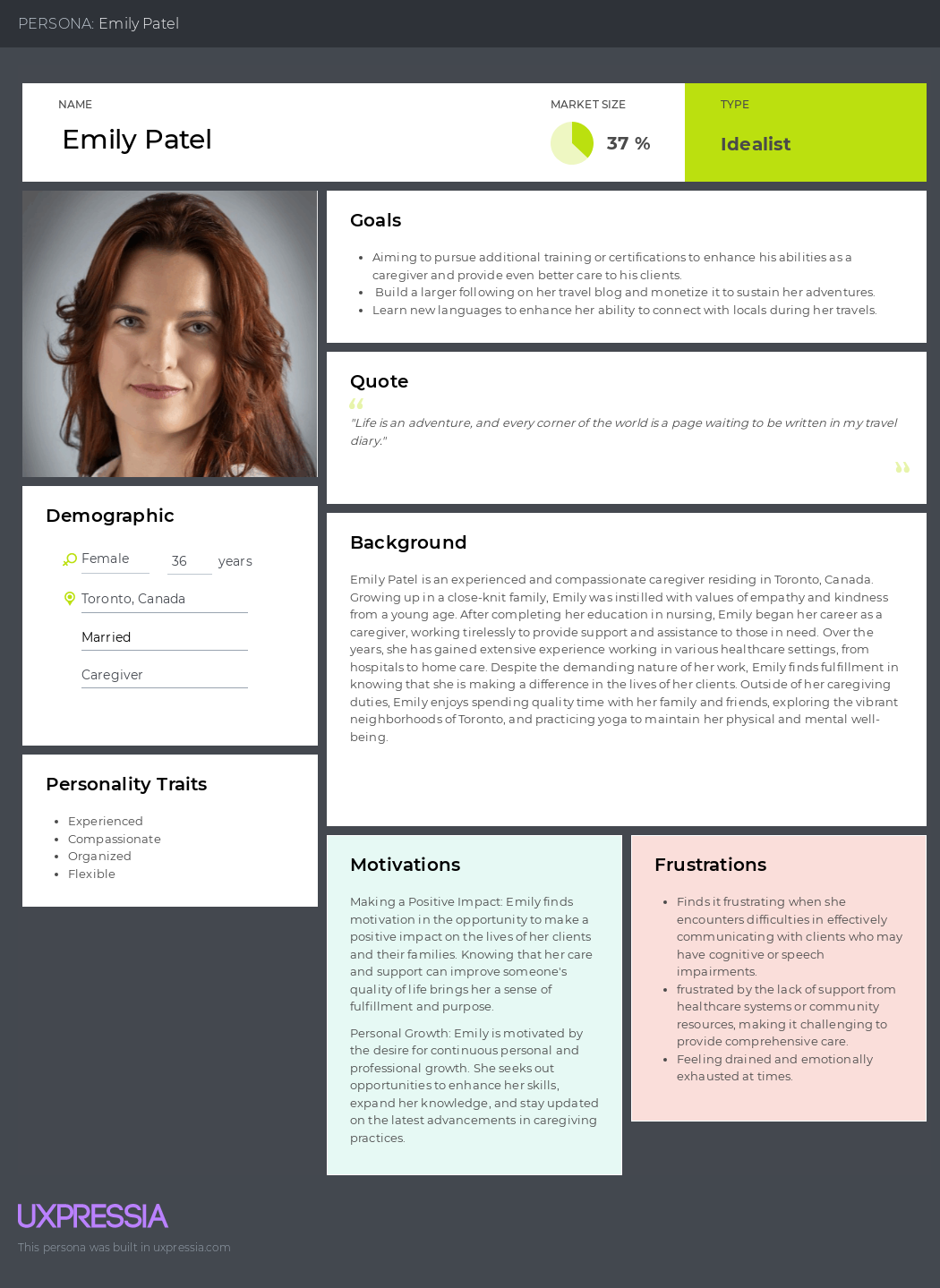
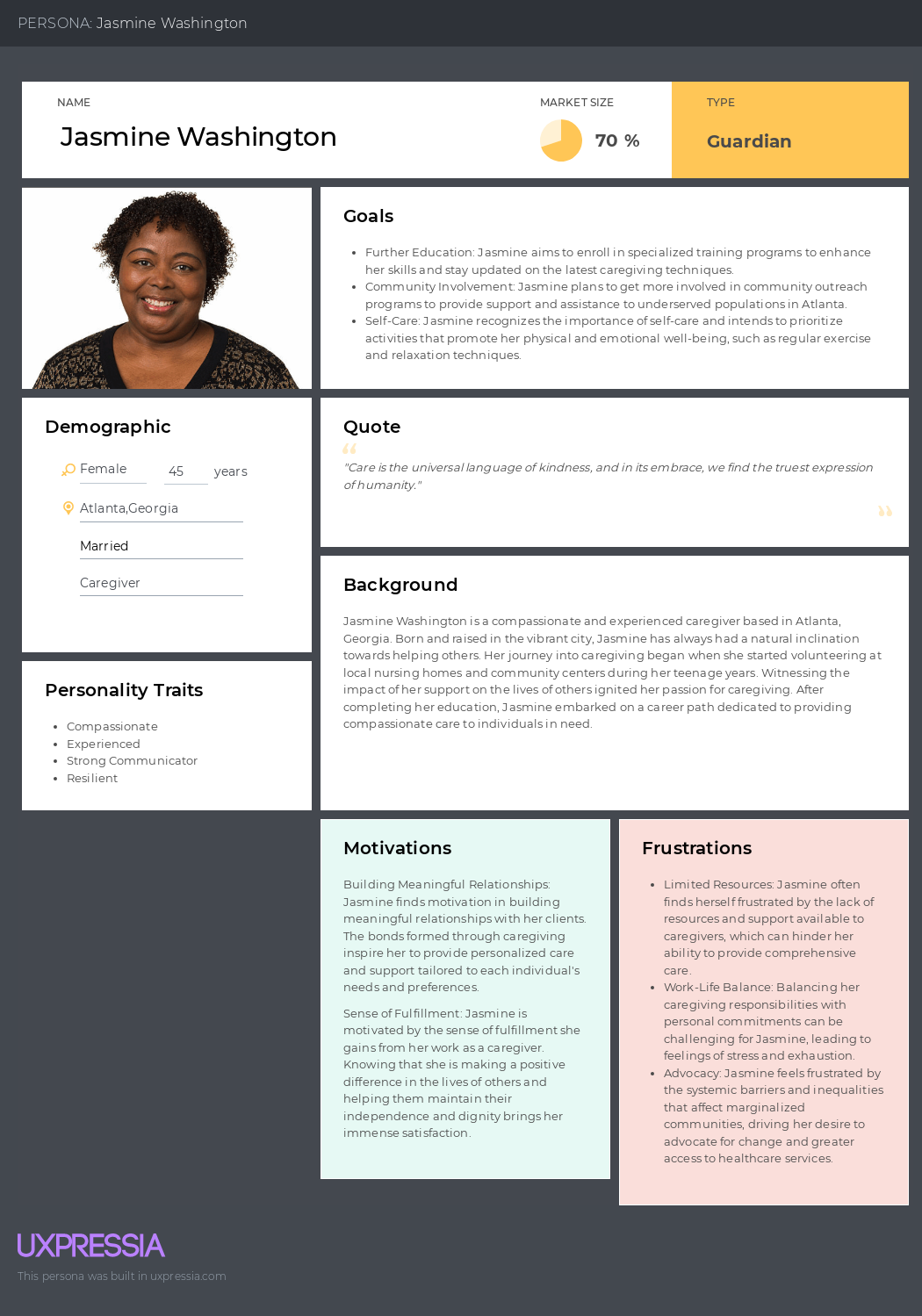
Brand Styles
I gave my team four brand styles to choose from. We all agreed that the green colored option was the best because it radiates life and hope.
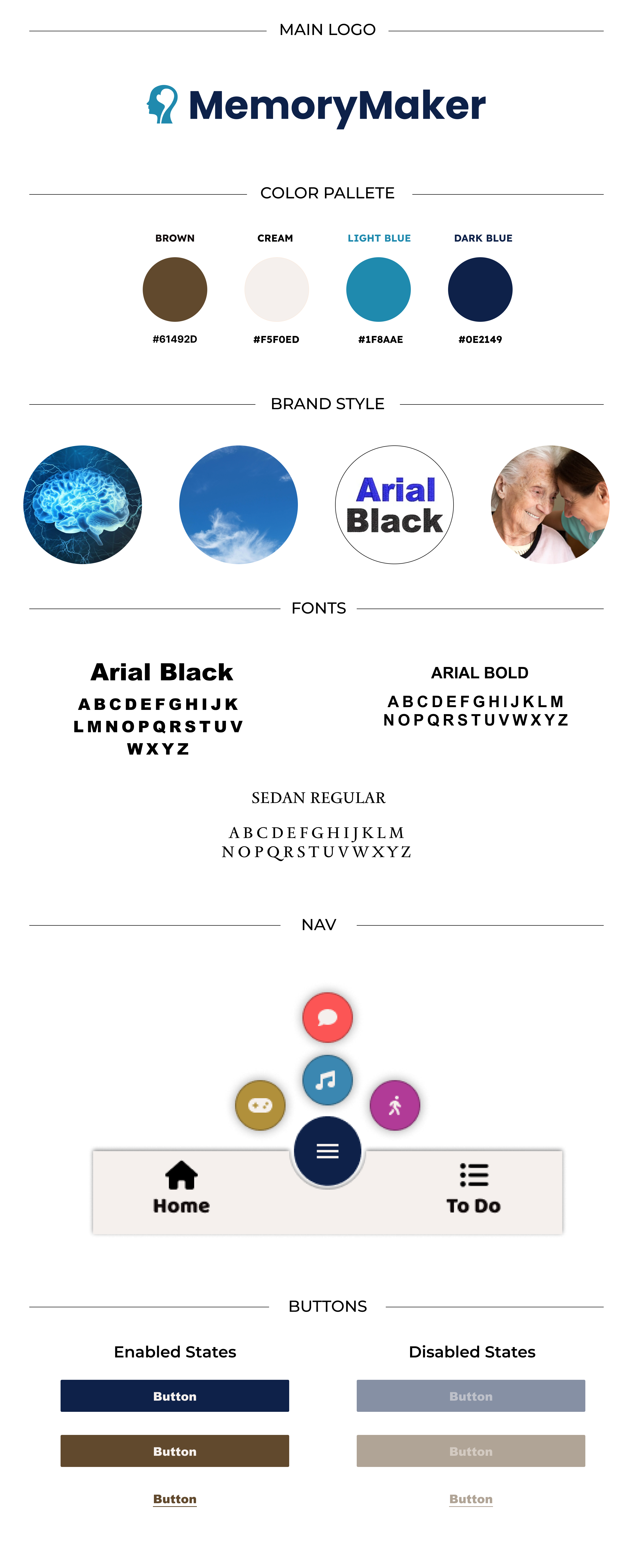
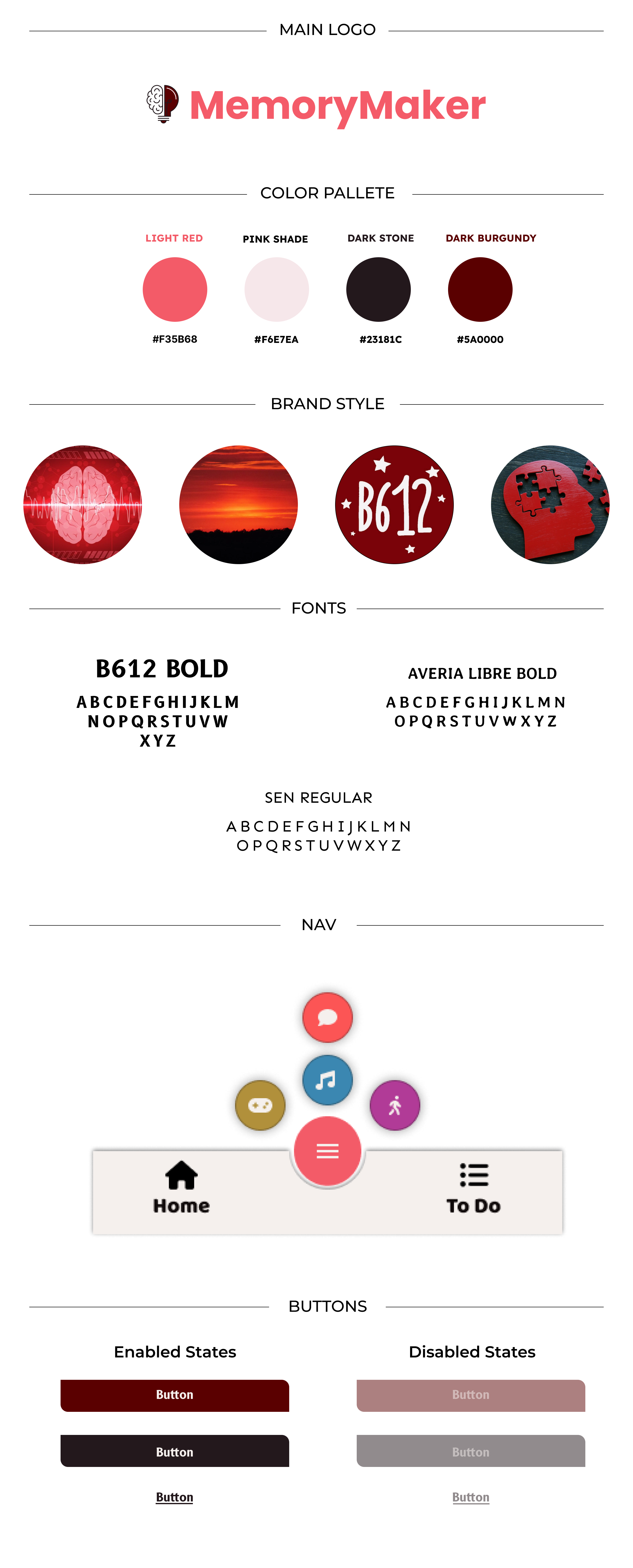
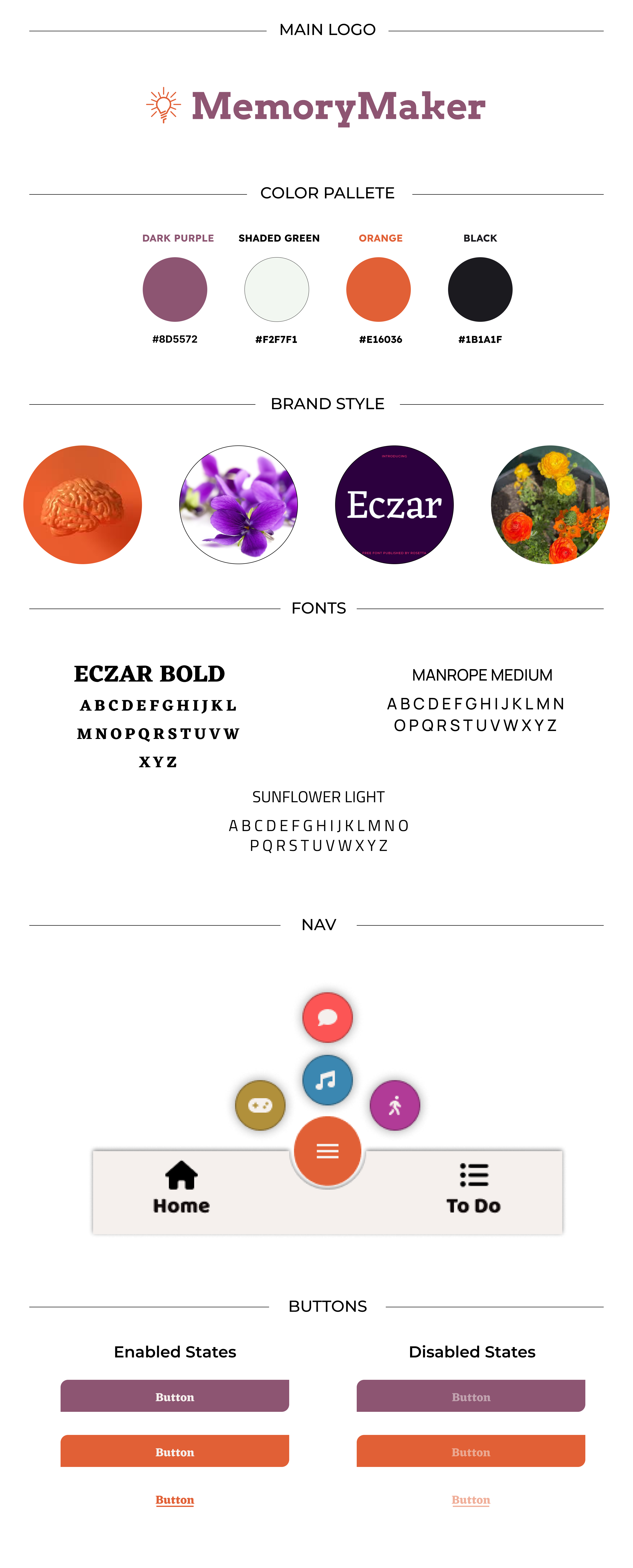
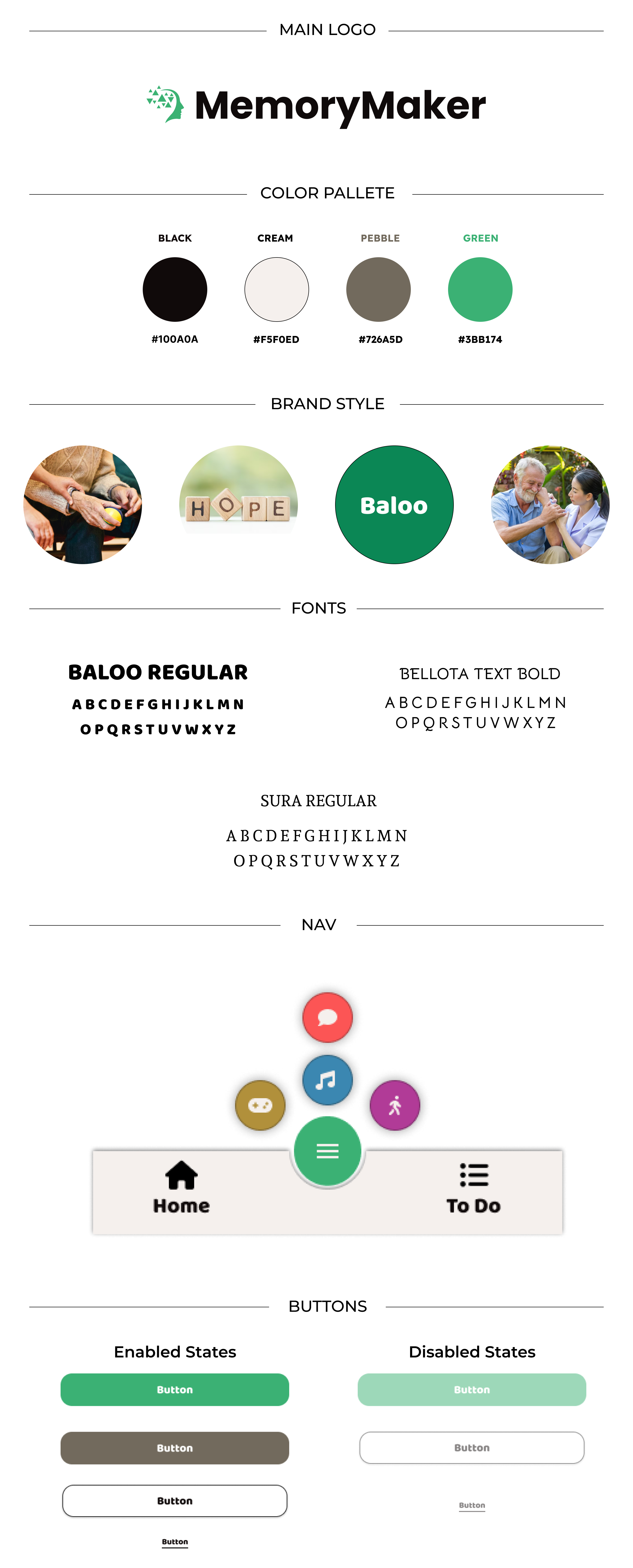
Two User Interfaces
Patient Interface
- Play memory games
- Communicate emotions
- Play music
- Perform exercises
- Helpful Reminders
Caretaker Interface
- Track cognative game performances
- Discover Care Receiver's music preferences
- Analyze Care Receiver emotion patterns
- Shop for products to assist patients
- Download reports
- Receive live updates and alerts
